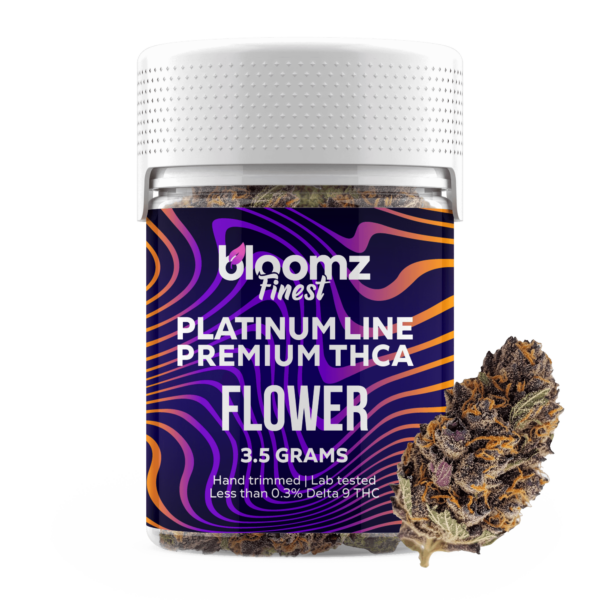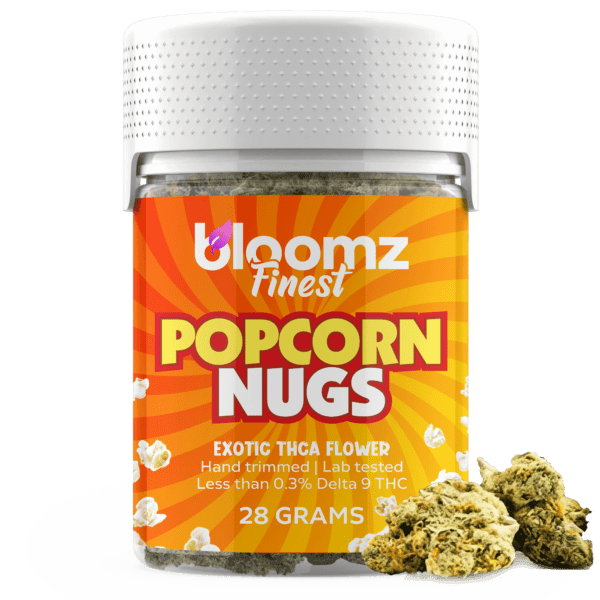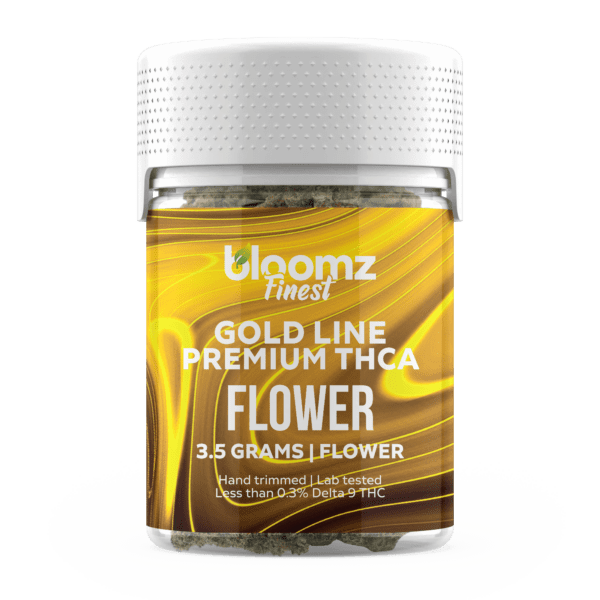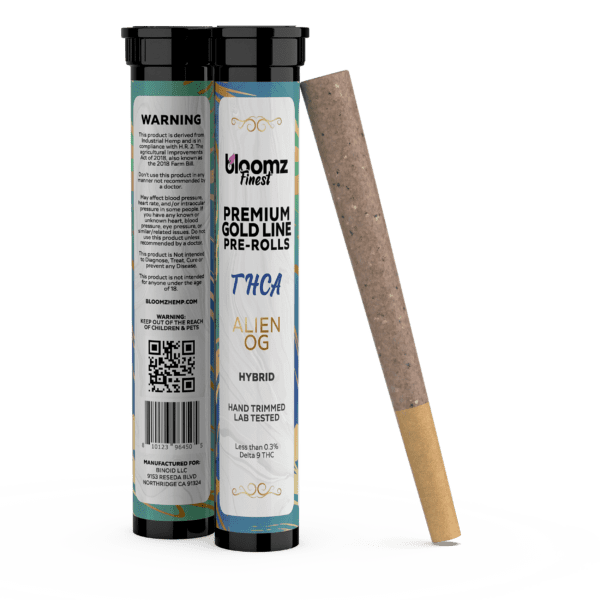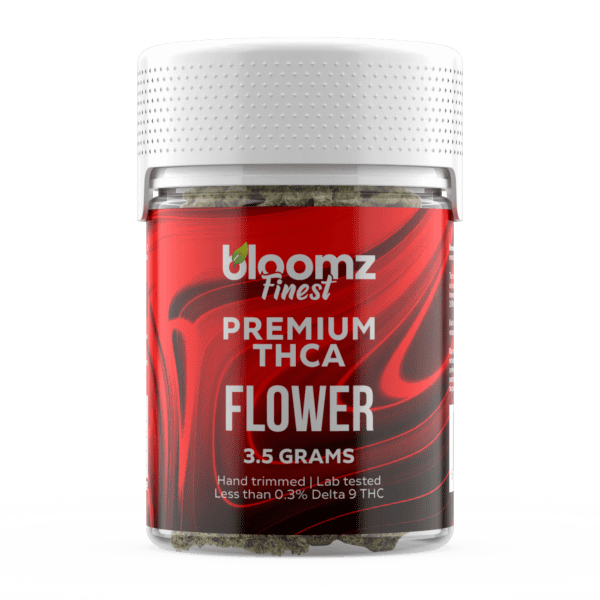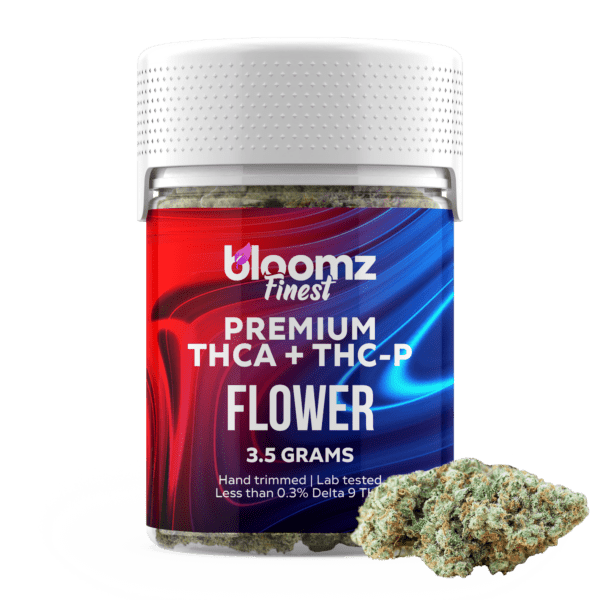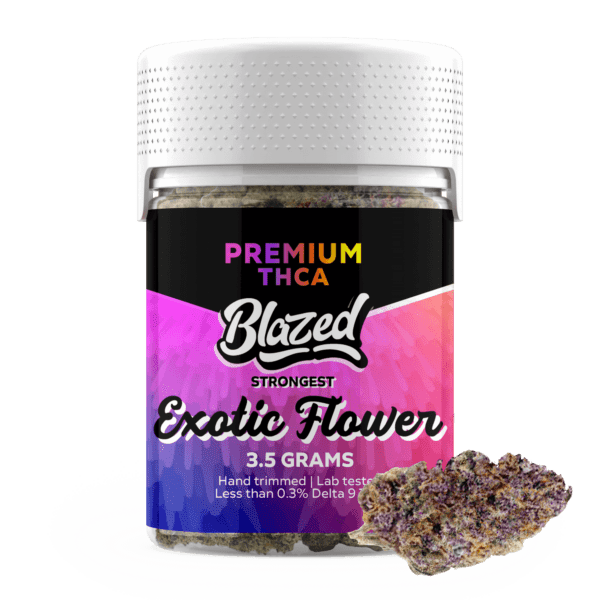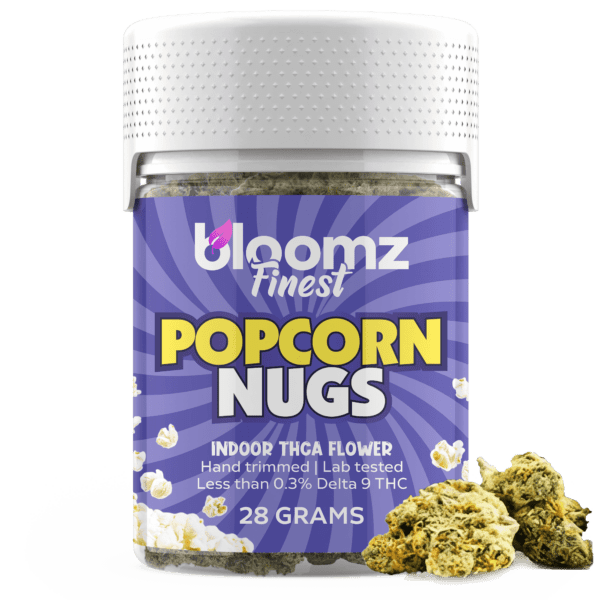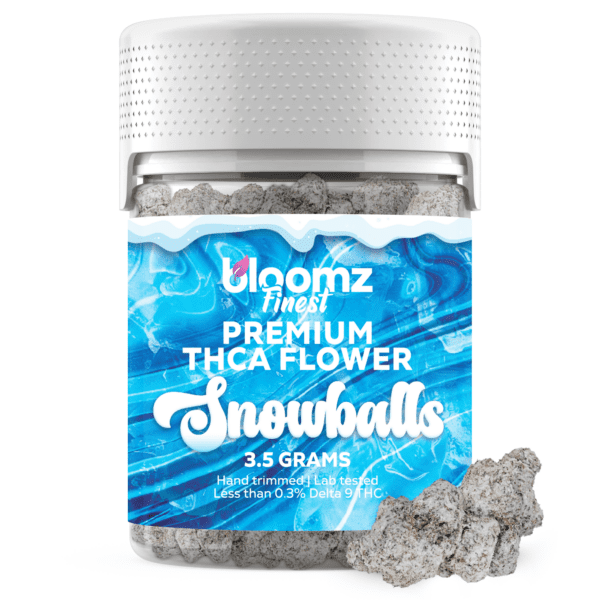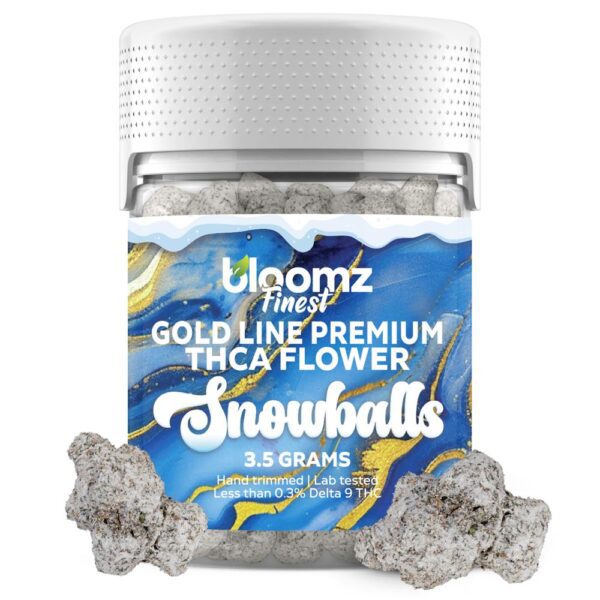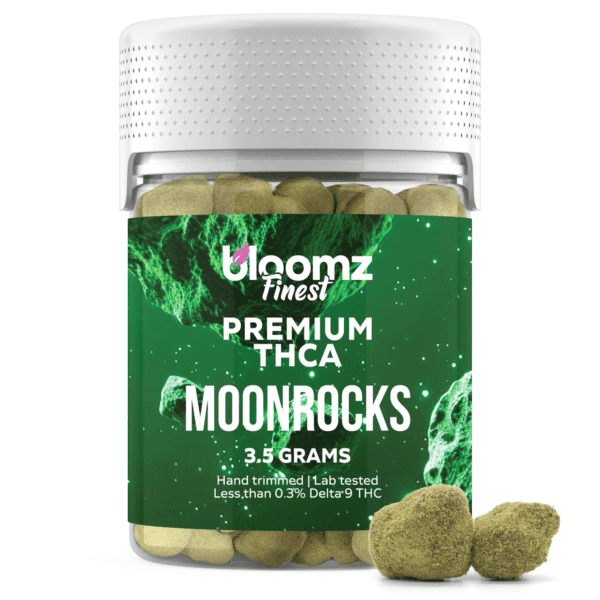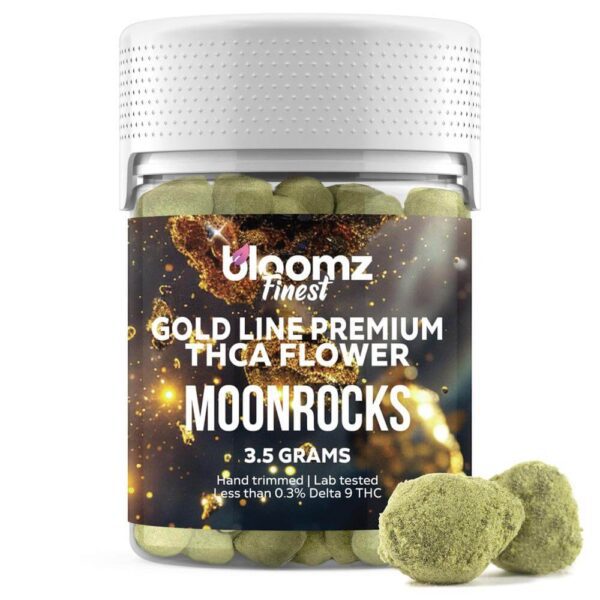In the expansive landscape of cannabis cultivation, there exists a special echelon where passion meets precision, where artistry guides science – the realm of Indoor Boutique THCA flower. This isn’t just about growing cannabis indoors; it’s about a philosophy, a commitment to small batches, rare genetics, and an obsessive attention to detail that elevates cultivation to a craft form.
Boutique flower represents the pinnacle of hands-on, quality-driven production, often yielding unique expressions of cannabinoids and terpenes that stand apart. Ever wondered what extraordinary level of care goes into creating these coveted buds, transforming carefully selected genetics into a truly connoisseur-grade experience? Let’s pull back the veil on the meticulous journey of indoor boutique THCA flower.
To Buy Indoor Boutique THCA Flower Pound Click Here
A Quick Insight into What Indoor Boutique THCA Flower is
Let’s unpack the term “Boutique Indoor THCA Hemp Flower” piece by piece to fully appreciate what it represents. First, “Hemp Flower” designates cannabis that’s legally classified as hemp under the 2018 Farm Bill. So, enter tetrahydrocannabinolic acid, that non-psychoactive precursor to THC found abundantly in raw cannabis, including specially bred hemp strains. When heated, THCA converts to Delta-9 THC, offering the potential for significant effects, all while remaining within the legal definition of hemp prior to combustion or decarboxylation.
Next, we add “Indoor” to the equation. As explored previously, indoor cultivation signifies growing cannabis within a highly controlled environment. This allows growers to meticulously manage light cycles, temperature, humidity, nutrients, and airflow, shielding plants from external stressors and optimizing conditions for growth. Indoor cultivation is often favored for producing flower with maximum aesthetic appeal – dense buds, vibrant colors, and heavy trichome coverage – as well as consistent cannabinoid and terpene profiles. It’s a method closely associated with achieving the highest levels of quality and visual perfection in the final product, setting a high bar for expectations.
Now, the term “Boutique” elevates the product further, as it generally refers to small-scale, craft cultivation focused on producing exceptional quality over sheer quantity. Boutique growers often prioritize unique or rare genetics, employ meticulous cultivation techniques (like living soil or specialized hydroponics), and invest significant hands-on care throughout the plant’s lifecycle. This often includes careful hand-trimming of the harvested buds to preserve trichomes and achieve perfect presentation, followed by slow, controlled drying and curing processes to maximize terpene preservation and overall quality. Boutique implies an artisanal approach, aiming for the absolute best expression of the flower’s potential.
Therefore, Boutique Indoor THCA Hemp Flower represents the confluence of legal compliance (hemp), potent potential (high THCA), controlled cultivation (indoor), and artisanal craftsmanship (boutique). It’s hemp flower grown indoors by cultivators dedicated to achieving the highest possible standards in terms of genetic uniqueness, visual appeal, aromatic complexity, and overall quality, often in small, carefully managed batches. It caters to connoisseurs seeking the finest expression of legal cannabis flower, where every detail from seed selection to final cure is handled with expert care and attention.
What is Initially Needed to Make Indoor Boutique THCA Flower?
Setting the stage for Indoor Boutique THCA Flower cultivation is akin to preparing a high-end luthier’s workshop or a Michelin-star kitchen; it requires not only the right tools but the finest tools, deployed within a perfectly conceived space, all guided by expertise and an unwavering commitment to excellence. Boutique production operates on principles of meticulous control, often small scale, and intense focus on maximizing the genetic potential of rare and unique cultivars. It’s about creating an environment where every variable can be precisely managed to nurture cannabis into its most exceptional form. Below is a look at the crucial initial requirements:
Exclusive & Elite Genetics: This remains the absolute cornerstone, elevated to an art form in boutique circles. It’s not enough to grow a popular strain well; boutique THCA flower growers seek exclusivity and unparalleled quality profiles.
Connoisseur-Grade Strains: Focus is often on acquiring genetics from highly respected breeders known for unique terpene profiles, potent effects, and striking visual traits, even if these strains are notoriously difficult to grow (“keeper cuts”). This might involve significant investment or access to tightly held private collections.
Intensive Phenotype Hunting: Boutique THCA operations frequently undertake extensive “pheno hunts.” This involves germinating a large number of seeds (dozens or even hundreds) from a specific genetic cross and cultivating each individual plant through a full cycle. Each phenotype is rigorously evaluated based on growth characteristics, bud structure, resin production, aroma during growth and cure, potency, terpene analysis, and overall ‘wow’ factor. Only the absolute best individual – the “keeper pheno” – is selected, cloned, and preserved as a mother plant for future production runs. This is a time-consuming and resource-intensive process fundamental to discovering unique expressions.
Prioritizing Quality Over Ease: Unlike commercial operations that might prioritize yield or rapid turnaround, boutique growers ften embrace genetically challenging strains if they offer unique characteristics. They invest the extra effort required to manage specific nutrient sensitivities, environmental requirements, or structural support needs of these demanding cultivars.
Terpene & THCA Focus: While high THCA is expected, the emphasis is often equally, if not more so, on achieving exceptionally high concentrations of specific, desirable terpenes that create unique and potent aromatic bouquets, contributing significantly to the connoisseur experience
Mother Plant Curation: Maintaining healthy, pest-free, and genetically stable mother plants from these elite selections requires dedicated space and meticulous care, representing a significant ongoing investment.
Immaculate & Purpose-Built Indoor Space: The physical environment is engineered for control and cleanliness, often exceeding standard cultivation practices.
Flawless Light-Proofing: Beyond simply blocking light, this involves construction techniques like double-door entries (“light locks”), baffled or light-trapped ventilation ports, using specialized non-reflective tapes over potential leaks, and ensuring even indicator lights on internal equipment are covered or emit non-disruptive wavelengths (like green). Verification of absolute darkness during the off-cycle is critical.
Hygienically Sealed & Designed: THCA Boutique spaces often strive for near-laboratory conditions. This means truly sealed rooms allowing for precise atmospheric control (including potential positive pressure to prevent inward contamination). Surfaces are chosen for extreme durability and ease of sterilization – epoxy or polyurethane flooring, stainless steel benches, FRP (Fiber-Reinforced Plastic) or HPL (High-Pressure Laminate) wall panels are common. Airflow is carefully designed to eliminate dead spots and potentially use principles like laminar flow in critical areas. Sanitation protocols are rigorous and frequent, often involving full room sterilization with specialized cleaners (like peracetic acid or ozone) between crop cycles.
Optimized Layout & Workflow: Space, even if small, is meticulously planned for workflow efficiency and plant health. This includes clear separation of ‘clean’ (flowering, drying) and ‘dirty’ (potting, mixing) zones, dedicated quarantine areas for new genetics, adequate spacing between plants for individual access and optimal air/light penetration, and sufficient clearance around equipment for maintenance and safety. Rolling benches might be used in slightly larger boutique rooms to maximize canopy space while allowing easy access. Every aspect of the layout facilitates meticulous, hands-on plant care.
Top-Tier Precision Environmental Controls: Boutique THCA flower cultivation leverages the best available technology to create and maintain the ideal micro-climate, often exceeding general horticultural standards.
Advanced Horticultural Lighting: High-end, full-spectrum LEDs with proven horticultural efficacy and granular control are the standard. This includes the ability to tune the light spectrum to optimize for specific growth phases (e.g., blue-rich for veg, red-rich for flower) or even specific strains. Supplemental lighting, such as targeted UV-A or UV-B fixtures used strategically during late flower, may be employed to potentially boost secondary metabolite production (THCA, terpenes, flavonoids). Achieving precise and uniform PPFD levels (often mapped meticulously across the canopy) is critical, with growers aiming for optimal intensity without causing stress. High-quality controllers provide precise dimming capabilities and potentially simulate gradual sunrise/sunset transitions to reduce plant stress.
Granular Climate Control (HVAC-D): Systems are chosen for their ability to maintain temperature and RH within extremely tight tolerances (often +/- 1°F and +/- 2-3% RH). Management frequently revolves around optimizing Vapor Pressure Deficit (VPD) – the difference between the amount of moisture in the air and the maximum amount it could hold at that temperature – which directly influences plant transpiration. Different VPD targets are maintained for cloning, vegetative growth, early THCA flower, and late flower/ripening phases. Redundant systems or backup generators may be in place to prevent catastrophic failures, as environmental stability is paramount.
Sophisticated Air Management: Air filtration often involves multiple stages, starting with pre-filters, moving through activated carbon beds (using high-quality virgin carbon for maximum odor adsorption capacity), and culminating in HEPA filtration on intakes to remove particles down to 0.3 microns, effectively blocking most mold spores and small pests. Air exchange rates (ACH – Air Changes per Hour) are carefully calculated and managed. Internal airflow patterns are designed using strategically placed fans (often controllable speed) to ensure homogenous conditions throughout the canopy without directly battering plants. While CO2 supplementation can boost growth, its use in boutique settings varies; some embrace it for maximizing potential within sterile environments, while organic/living soil focused growers might forego it, prioritizing natural processes and believing elevated CO2 can dilute THCA terpene profiles. If used, precise injection, monitoring, and safety interlocks are mandatory.
Specialized Growing Method & Medium: The choice here is often deeply intertwined with the grower’s philosophy and the desired end product characteristics.
Highly Optimized Hydroponics/Aeroponics: Boutique hydro might involve Deep Water Culture (DWC) with water chillers maintaining optimal root zone temperatures (e.g., 65-68°F), continuous monitoring and adjustment of dissolved oxygen (DO) levels, potentially using ozone or UV sterilization for reservoir water, and multi-part nutrient solutions delivered via precisely timed drip or NFT systems. The focus is on maximizing control and potentially steering cannabinoid/terpene synthesis through nutrient manipulation.
Meticulously Managed Soilless Mixes: Utilizing premium, buffered coco coir or specific peat blends, often amended with high-quality THCA inputs like worm castings, mycorrhizal fungi, or specific mineral amendments. Fertigation is highly controlled, sometimes employing substrate moisture/EC sensors and “crop steering” techniques – manipulating irrigation frequency and volume to impose slight, controlled stress at specific times to influence growth patterns or metabolite production. Individual plant feeding might even occur based on specific needs.
Craft Living Soil: This popular boutique method focuses on creating a thriving soil ecosystem within large indoor containers or beds. It involves using complex soil recipes with diverse organic inputs (various composts, meals, rock dusts, biochar), often employing cover crops, utilizing beneficial nematodes and predatory mites within the soil, and feeding the soil life with actively aerated compost teas brewed with specific ingredients (e.g., molasses, kelp, fish hydrolysate). The goal is maximum terpene complexity and a perceived “smoother” end product, though it requires significant expertise in soil biology and organic nutrient cycling.
Ultra-Premium Nutrients & Advanced Monitoring: Only the highest quality inputs and precise monitoring tools are acceptable.
Boutique Nutrients/Custom Blends: Hydro/soilless growers often use boutique nutrient brands known for using pharmaceutical-grade minerals, superior chelation agents (improving nutrient availability), and minimal heavy metal contamination, or they may create custom blends based on tissue analysis. Living soil growers meticulously source certified organic amendments (e.g., specific guanos for PK boost, high-quality fish bone meal, langbeinite) and microbial inoculants. Crucially, there is an absolute avoidance of prohibited synthetic Plant Growth Regulators (PGRs) like paclobutrazol or daminozide. Feeding schedules are dynamic and responsive to plant needs and growth stage.
Precision Monitoring & Interpretation: Professional-grade pH and EC meters are calibrated frequently (often daily or weekly). Advanced operations may utilize inline sensors for continuous monitoring of reservoir pH/EC/temperature, or substrate sensors measuring water content, EC, and temperature directly in the root zone. Data logging is common, but the emphasis is on the master grower interpreting this data in the context of visual plant observation to make informed, often subtle adjustments. Tissue analysis might be performed periodically to verify nutrient uptake and fine-tune feeding programs.
Hyper-Purified Water Source: Providing pure, predictable water is non-negotiable.
Multi-Stage RO Filtration: Standard practice involves multi-stage Reverse Osmosis systems (including sediment pre-filters, carbon block pre-filters, the RO membrane itself, and potentially a deionization post-filter) to produce water with near-zero EC/PPM. This removes chlorine, chloramine, minerals, heavy metals, and other contaminants.
RO Water Management: Proper Ca/Mg supplementation strategy is essential when using RO water. Water storage tanks must be kept clean. Some boutique growers experiment with water temperature control for nutrient solutions or explore more esoteric concepts like water structuring, believing these details can provide an edge in optimizing plant health.
Rigorous Proactive Integrated Pest Management (IPM): IPM in boutique settings is elevated to an almost preventative-only strategy.
Sterile Protocols & Controlled Access: Extremely strict protocols often include dedicated facility clothing/footwear, mandatory hand washing/sanitizing, foot baths at entry points, tool sterilization between plants, controlled airflow (positive pressure), and potentially even air shower entryways to minimize contaminant introduction.
Aggressive Prevention & Biological Control: Heavy reliance on multi-stage air filtration is key. A strict quarantine protocol for any incoming material (plants, soil, equipment) is enforced. Regular, scheduled releases of multiple species of beneficial insects and predatory mites suited for common cannabis pests act as a standing biological defense force. Application of beneficial microbial sprays (Bacillus species, Streptomyces species) to foliage or substrate may also be used preventatively.
Zero Tolerance & Removal: Detection of any pest or disease triggers immediate, localized action, which often means sacrificing the affected plant(s) to protect the rest of the high-value crop rather than attempting broad treatments, even organic ones. Synthetic chemical pesticides are completely incompatible with boutique quality standards.
Master Grower Expertise: This human element is irreplaceable and often the defining factor. Boutique THCA cultivation hinges on the deep knowledge, years of experience, keen observational skills, problem-solving abilities, and sheer passion of the master grower(s). They “read” the plants, interpret data nuances, make intuitive adjustments, refine processes over time, and guide the entire operation with an intimate understanding of both the science and the art of growing exceptional cannabis. Technology supports, but does not replace, this expertise.
Advanced Monitoring & Data Logging (Balanced with Hands-On): While leveraging sophisticated sensors for continuous monitoring (temp, RH, VPD, CO2, potentially substrate EC/WC/temp), the boutique philosophy often prioritizes using this data to inform the grower’s hands-on decisions rather than driving full automation. Data logging allows for meticulous tracking of environmental parameters and grower actions, enabling analysis, replication of successes, and continuous process refinement. The balance ensures technological precision supports, rather than supplants, the crucial element of experienced human oversight and interaction.
Understanding the Entire Indoor Boutique THCA Flower Process
The journey of Indoor Boutique THCA Flower is characterized by an intensified level of care and precision applied to every stage of the plant’s lifecycle. Building upon the controlled nature of indoor cultivation, the boutique approach layers on meticulous hands-on management, often longer timelines, and techniques specifically aimed at maximizing genetic potential for unique cannabinoid and terpene expression, as well as aesthetic perfection. It’s less about speed and volume, and more about nurturing each plant towards its absolute finest state. Here’s how the process typically unfolds in a boutique setting:
Elite Strain Selection & Phenotype Hunting: It begins not just with choosing a good strain but often involves acquiring rare or exclusive genetics (seeds or clones). Boutique cultivators frequently engage in “pheno-hunting” – growing out numerous seeds from a promising cross and meticulously evaluating each individual plant (“phenotype”) for desirable traits like unique aroma, resin production, color, structure, and vigor. Only the most exceptional individuals are selected for propagation as mother plants.
Meticulous Propagation: Clones are taken from carefully selected mother plants under sterile conditions and rooted with precision, often using specific rooting hormones and tightly controlled humidity domes or aeroponic cloners to ensure high success rates and vigorous, healthy starts. Seedlings are treated with similar care.
Extended & Optimized Vegetative Stage: Boutique growers may allow for longer vegetative periods compared to commercial operations, focusing on building a perfect plant structure before initiating flowering. This involves intensive training techniques like mainlining, complex Screen of Green (ScrOG) setups, or specific pruning methods tailored to the strain, all aimed at creating an even canopy where every future bud site receives optimal light. Environmental conditions and nutrients are dialed in precisely for robust growth.
Carefully Managed Flowering Transition & Phase: The switch to the 12/12 light cycle is precise. Throughout flowering, environmental parameters (Temp, RH, VPD) are managed within extremely tight tolerances, often adjusted dynamically based on the week of flower and specific strain needs. Nutrient solutions are fine-tuned, sometimes daily, based on plant feedback and runoff readings. Techniques to enhance terpene and cannabinoid production might be employed, such as supplemental UV-B lighting in late THCA flower, controlled use of drought or temperature stress (expertly applied), or specific nutrient manipulations known only through experience. Constant observation is key.
Targeted Flushing (if applicable): If flushing is part of the grower’s protocol (common in hydro/soilless), it’s done meticulously, monitoring runoff EC/PPM closely to ensure nutrients are cleared effectively without overly stressing the plant just before harvest. The duration and method are often strain-specific.
Selective & Gentle Harvesting: Unlike large operations that might harvest entire rooms at once, boutique growers often harvest selectively, plant by plant, or even branch by branch, based on the perfect point of trichome maturity assessed under magnification. Handling during harvest is exceptionally gentle to minimize any disturbance or loss of delicate trichomes.
Artisanal Hand-Trimming: This is a hallmark of boutique flower. Trimming is almost exclusively done by hand, by skilled individuals who meticulously sculpt each bud, removing all unnecessary leaf material while preserving the flower’s natural shape and maximizing the visibility of its trichome coating. The goal is aesthetic perfection and optimal quality. Both wet and dry trimming methods are used, depending on grower preference and environmental control during drying.
Slow & Controlled Drying (‘Low and Slow’): Boutique operations place enormous emphasis on the drying process. Flower is dried very slowly in a dedicated, pitch-dark room with strictly maintained temperature (often cooler, e.g., 60-65°F) and humidity (e.g., 58-62% RH) with minimal, indirect airflow. This “low and slow” approach, often lasting 10-21 days, is crucial for preserving the maximum amount of volatile terpenes, which are responsible for the flower’s unique aroma and flavor.
Extended Curing (‘The Long Cure’): Following the slow dry, curing is often extended significantly compared to standard practices. Buds are carefully placed in airtight glass jars and stored in cool, dark conditions for weeks, often months. The “burping” schedule (opening jars to exchange air) is managed meticulously, becoming less frequent over time. This patient, long cure allows for the full development and harmonization of complex flavors and aromas, resulting in an exceptionally smooth and nuanced final product.
Rigorous Quality Control & Curation: Beyond standard lab testing (potency, terpenes, safety), boutique THCA flower undergoes intense sensory evaluation by the master grower and team. Only the best buds meeting stringent criteria for appearance, aroma, structure, and overall quality are selected for sale. Batches might be further curated into different tiers (e.g., ‘reserve’ batches representing the absolute best).
Premium Hand Packaging: The final step often involves carefully hand-packaging the curated buds into high-quality containers (frequently glass jars) that reflect the artisanal nature of the product. Packaging is chosen for optimal preservation and presentation, often including detailed information about the strain’s genetics, terpene profile, harvest date, and the farm’s story.
Why is Each Step Vital to the Indoor Boutique THCA Flower Making Process Anyways?
In the pursuit of crafting true Indoor Boutique THCA flower, every single step isn’t just a task to be completed, but an opportunity for refinement and expression of quality. The “boutique” designation implies a level of care and attention that transcends standard cultivation; it’s about achieving the absolute peak potential of unique genetics through unwavering dedication. Compromising on any single element below undermines the entire philosophy and prevents the flower from achieving that rare combination of potency, complexity, and aesthetic perfection that defines the category:
Elite Strain Selection & Pheno Hunting: Vital because boutique relies on uniqueness. Starting with rare or exceptionally expressive genetics, and further refining through pheno hunting, sets the stage for a truly distinct final product that can’t be easily replicated. It’s the source code for exclusivity.
Meticulous Propagation: Ensures that the chosen elite genetics get the strongest possible start, minimizing stress and maximizing uniformity within the small batch, allowing the grower’s efforts to be focused on optimizing growth rather than correcting early problems.
Extended & Optimized Vegetative Stage: Building a perfect plant structure through intensive training and extended veg time is crucial for maximizing the number of high-quality bud sites and ensuring even light penetration within the controlled space, leading to superior yield quality and consistency within the batch.
Carefully Managed Flowering: This is where the unique cannabinoids and terpenes are synthesized. Precision control over every environmental factor and nutrient input allows the grower to steer the plant towards its maximum genetic potential for THCA and specific terpene expression. Stress mitigation and targeted enhancement techniques contribute directly to the final complex profile.
Targeted Flushing: When practiced, meticulous flushing ensures that the pure flavors of the carefully cultivated flower aren’t masked by residual nutrients, contributing to the clean, refined experience expected from boutique products.
Selective & Gentle Harvesting: Harvesting at the absolute peak of trichome ripeness, often selectively, captures the flower at its maximum potential for potency and aromatic intensity. Gentle handling preserves the fragile trichomes, which are the reservoirs of the desired compounds.
Artisanal Hand-Trimming: Essential for the visual appeal and quality perception of boutique flower. It removes all non-essential material without damaging the bud or trichomes, presenting the flower in its most perfect form and ensuring a smooth experience. It’s a signature of craft quality.
Slow & Controlled Drying (‘Low and Slow’): Critically important for preserving the volatile terpenes that define the unique aroma and flavor profile of boutique strains. Rushing the dry destroys these delicate compounds; the slow dry locks them in.
Extended Curing (‘The Long Cure’): This patient process is arguably what transforms merely great flower into exceptional boutique THCA flower. It allows chemical compounds to mature and synergize, breaking down harsh notes and developing incredible depth of flavor and aroma, resulting in unparalleled smoothness.
Rigorous Quality Control & Curation: Ensures that only the absolute best examples, meeting the highest standards of the grower, reach the consumer. This curation maintains the reputation and exclusivity associated with the boutique label. Lab testing provides objective validation of potency and safety.
Premium Hand Packaging: Protects the significant investment in quality made throughout the process. Proper packaging maintains freshness and prevents degradation, while premium presentation reflects the artisanal value and justifies the higher price point associated with boutique flower.
In essence, each step in the boutique process is performed with an intensity and focus aimed at achieving perfection, recognizing that the final product is a culmination of hundreds of small, expertly executed decisions.
Recommended products
How is the Packaging Itself for Indoor Boutique THCA Flower Made and Designed?
Packaging for Indoor Boutique THCA flower transcends mere containment; it’s an extension of the brand’s craft philosophy and a crucial element in preserving the exceptional quality achieved through meticulous cultivation. Given the emphasis on rare genetics, complex terpene profiles, and often stunning visual appeal, boutique packaging is designed to provide superior protection against degradation while simultaneously showcasing the product’s exclusivity and aesthetic beauty. Materials are chosen for inertness and barrier properties, designs often prioritize visibility and premium feel, and the overall presentation aims to convey the artisanal care invested in the flower within. Compliance with safety regulations remains essential, but it’s integrated within a framework of high-end design and optimal preservation.
Glass Jars
Glass jars are arguably the most popular choice for boutique THCA Flower, manufactured by melting silica sand, soda ash, and limestone, then molding the molten glass. Boutique brands often opt for high-quality, thicker glass for a substantial feel, potentially in unique shapes or sizes. Clear glass is frequently chosen to proudly display the flower’s visual characteristics (trichome density, color, structure), a key selling point for boutique buds. Amber or other UV-protective colored glass might be used by brands prioritizing long-term preservation over immediate visibility. Lids are critical – high-quality metal or wooden lids with robust, airtight liners (like PTFE or specialized foam) are preferred over standard plastic caps to ensure a hermetic seal.
The design focuses on maximizing both preservation and presentation. Glass’s inert nature guarantees no interaction with the delicate terpene profile. A truly airtight seal is paramount for maintaining the perfect cure humidity and preventing oxygen intrusion or aroma loss. Clear glass turns the package into a display case, while UV-protective glass offers better defense against light degradation. The smooth surface allows for elegant labeling – often minimalist designs emphasizing the brand, strain, and key data (THCA%, dominant terpenes, harvest date) – or even direct printing or etching for a more integrated, premium look. Overall, glass conveys a sense of quality, permanence, and respect for the product inside.
Pros:
Superior inertness, perfectly preserving delicate terpene profiles
Excellent potential for a long-lasting airtight seal with quality lids/liners.
Premium aesthetic feel and visual display (especially clear glass).
Offers UV protection options (colored glass).
Provides maximum physical protection against crushing.
Infinitely recyclable (glass portion).
Cons:
Higher cost compared to other options.
Breakable and heavier/bulkier for transport.
Clear glass offers no UV light protection.
Seal integrity is entirely dependent on the quality of the lid and liner system.
Recommended products
Biodegradable Jars
These jars, made from plant-based materials like PLA or composites with bamboo/wood fiber via molding processes, appeal to sustainability-focused boutique brands. While potentially offering good rigidity and some light protection due to opacity, the emphasis is on the eco-conscious message aligning with natural or organic cultivation philosophies. Designs aim for effective seals, though achieving the same level of long-term inertness and hermetic sealing as glass can be challenging.
For boutique flower, the design must balance sustainability with high-performance preservation. Rigidity protects THCA buds, and the seal must be robust enough to maintain the cure. Opacity helps with light protection. The aesthetic often leans towards natural or minimalist, suitable for brands emphasizing organic practices. Labeling communicates the brand’s eco-commitment alongside product details. However, brands prioritizing absolute maximum terpene preservation over sustainability might still prefer glass.
Pros:
Strong environmental appeal aligns with sustainable/organic brands.
Often opaque, offering light protection.
Rigid structure protects buds.
Reduced reliance on fossil fuel plastics.
Cons:
Seal quality and long-term barrier properties might not match premium glass.
Higher cost than conventional plastics, potentially rivaling glass.
May not be perceived as ‘premium’ as glass by all consumers.
Biodegradation requires specific conditions.
Mylar Bags
While common in the broader market, Mylar bags (multi-layer laminates with foil) are used more selectively for top-tier boutique THCA flower. If used, brands typically opt for higher-quality, thicker bags with superior zipper mechanisms and potentially soft-touch finishes or unique printing techniques (e.g., metallic inks, embossing) to enhance the premium feel. The core design advantage remains the excellent barrier properties against light, oxygen, and moisture provided by the foil layer.
The design focus for boutique use is maximizing the barrier properties while elevating the tactile and visual presentation. The opacity guarantees UV protection, and a good heat seal ensures initial freshness. High-quality zippers are crucial for resealability without compromising the seal significantly. The large surface area allows for detailed branding, storytelling, and display of extensive terpene data, which appeals to connoisseur consumers. However, the lack of crush protection and potential for a less premium perception compared to jars are drawbacks.
Pros:
Outstanding light, oxygen, and moisture barrier.
Complete UV protection.
Lightweight and space-efficient.
Large canvas for branding and detailed information.
Can incorporate reliable child-resistant zippers.
Cons:
Offers no protection against physical crushing.
Can feel less premium than rigid containers.
Seal integrity of zippers can degrade with use.
Recycling challenges due to mixed materials.
Vacuum Sealed Bags
Primarily used by boutique operations for internal backstocking or preserving larger quantities immediately post-cure to halt degradation before final retail packaging. Made from durable multi-layer plastic films, their design function is oxygen removal via a vacuum sealer. They offer excellent preservation by minimizing oxidation but provide little physical protection and lack shelf appeal.
It’s rare to see boutique THCA flower sold directly to consumers in a simple vacuum-sealed bag. If used in a retail context, it might be as an inner layer within a more premium outer package (like a box or tin) to guarantee freshness upon opening, but the primary application remains bulk preservation behind the scenes.
Pros:
Excellent preservation by removing oxygen.
Maximizes shelf life for backstock.
Effectively contains strong aromas until opened.
Cons:
Requires vacuum sealer.
No crush protection; can compress buds.
Not resealable.
Lacks retail presentation appeal.
Plastic waste.
Plastic Vials/Tubes
Generally, not used for packaging boutique THCA flower buds themselves due to a less premium perception and potentially less robust sealing compared to glass jars or high-end Mylar. Injection molded from PP, PS, or PET, they offer rigidity and CR features but don’t typically align with the high-end aesthetic and preservation demands of top-tier boutique flower.
Their primary role in the boutique space might be for packaging pre-rolls made from boutique flower or small samples, where crush protection and compliance are key for a small unit size, but they aren’t the standard choice for showcasing premium whole buds.
Pros:
Good crush protection for small quantities.
Incorporates CR/TE features.
Relatively inexpensive.
Cons:
Less premium perception.
Seal quality/longevity may be inferior to jars/Mylar.
Less common for premium whole flower.
Plastic waste concerns.
Restricted to how much you can have in them.
For Retailers and Consumers: Ways to Identify Properly Made Indoor Boutique THCA Flower
Identifying genuine Indoor Boutique THCA Flower requires going beyond typical quality checks and looking for signs of true craftsmanship, exceptional genetics, and meticulous post-harvest care. In a market where terms can be used loosely, discerning the real deal involves assessing nuances in appearance, aroma complexity, cure quality, and often, the story and transparency of the producer. Both retailers curating their top shelf and consumers seeking an unparalleled experience need to cultivate a keen eye and nose for the indicators that separate authentic boutique flower from mass-market products.
How Retailers Can Identify Properly Made Indoor Boutique THCA Flower
For retailers, stocking genuine boutique THCA flower means sourcing from true craft producers and verifying the exceptional quality claims. This requires a discerning approach beyond standard inventory checks, such as:
Verifying the Grower’s Reputation & Philosophy: Build relationships with small-batch, craft cultivators known for their passion, expertise, and specific cultivation philosophies (e.g., living soil, specific hydro techniques). Look for transparency about genetics, processes, and limited batch sizes. The story behind the flower is often part of the boutique appeal.
Analyzing COAs for Exceptional Profiles: While potency (high THCA, low Delta-9) and safety are baseline, scrutinize the terpene analysis. Look for unusually high total terpene percentages and complex profiles featuring unique or less common terpenes, indicating meticulous preservation and unique genetics.
Conducting Expert-Level Sensory Evaluation: Boutique THCA flower should excel here:
Sight: Expect stunning visual appeal – exceptionally dense trichome coverage making buds look “frosted” or crystalline, potentially unique colors, intricate structures, flawless hand-trimming leaving no extraneous leaf, and overall ‘wow’ factor.
Smell (Nose): The aroma should be exceptionally potent (“loud”), complex, nuanced, and unique to the specific rare strain. It should be instantly captivating and clean, without any hint of generic cannabis smell, nutrient solutions, or environmental issues.
Touch/Feel: Buds should feel perfectly cured – dense, slightly sticky/tacky from resin (not wet), with a satisfying spring-back. The cure should be evident in the texture and resilience.
Considering Batch Size and Exclusivity: True boutique THCA flower is produced in small, limited batches. Retailers should inquire about batch sizes and availability – widespread, constant availability might contradict the “boutique” claim. Consistency within a small batch should be high but expect variation between different batches/phenos if the grower experiments.
Assessing Packaging and Presentation: Look for premium packaging (often glass jars) that reflects the craft nature, provides excellent preservation, and includes detailed information (terpenes, harvest date, genetics).
How Consumers Can Identify Properly Made Indoor Boutique THCA Flower
Consumers seeking the unique experience offered by boutique flower can look for several key indicators that suggest authentic craft quality:
Seek Out Brands with Transparency & Story: Look for producers who openly share their cultivation philosophy, genetic details, and small-batch approach. Brands emphasizing craftsmanship and passion are often aligned with boutique ideals. Knowledgeable retailers can guide you.
Prioritize Terpene Profiles: While high THCA is common, boutique consumers often focus on unique and pronounced terpene profiles. Look at lab reports (if available) for high terpene percentages and interesting combinations. Let your nose guide you – the aroma should be exceptional.
Examine Visual Characteristics Closely: Look for extraordinary “bag appeal” – buds that seem almost unnaturally frosty with trichomes, possess unique structures or colors, and feature an absolutely perfect, hand-trimmed finish.
Evaluate the Cure: The feel of the bud should indicate a meticulous cure – sticky, dense, slightly springy. The smoke or vapor should be exceptionally smooth, flavorful, and clean-tasting.
Expect Premium Pricing: Craftsmanship, rare genetics, small batches, and intensive labor mean boutique THCA flower commands a significantly higher price point. Be wary of products labeled “boutique” but priced unusually low.
Inspect the Packaging: Premium packaging, often glass jars, with detailed labeling including specific strain lineage, dominant terpenes, harvest/test dates, and potentially the grower’s signature or story, often signifies a boutique product.
Trust Your Senses & Experience: Ultimately, authentic boutique flower should deliver a noticeably superior sensory experience – unparalleled aroma, complex flavor, smooth consumption, and effects that feel clean and pronounced, reflecting the quality of the cultivation and cure.
Crafting Beautiful Indoor Boutique THCA Flower Truly is an Intricate Process!
The creation of Indoor Boutique THCA Flower is far more than a production cycle; it is an embodiment of dedication, a deep dialogue between the cultivator and the plant, pursued within the meticulously controlled confines of an indoor sanctuary. It represents a commitment to pushing beyond mere quality towards genuine artistry, where every input is measured, every environmental shift is deliberate, and every phase is executed with an almost obsessive focus on perfection.
This intricate dance of science, technology, and intuition aims not just for potency, but for the nuanced expression of rare genetics, culminating in flower that captivates the senses and offers a truly unique experience. Boutique flower stands as a testament to the heights cannabis cultivation can reach when driven by passion and an unrelenting pursuit of the extraordinary.
To Buy Indoor Boutique THCA Flower Pound Click Here
Recommended products
-
THCA Snowballs – Gold Line
$57.99$89.99 -
THCA Moonrocks – Gold Line
$57.99$89.99


